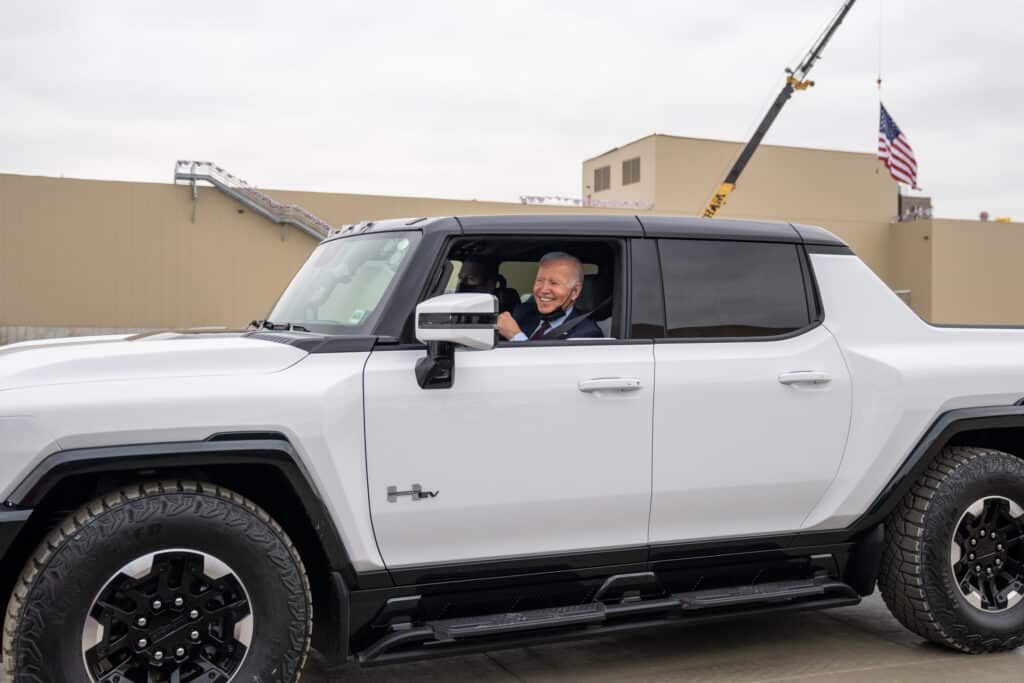
Joe Biden Narrative on Electric Vehicles Challenged by New Research
For the first time in 18 months, mid-priced Internal Combustion Engine (ICE) vehicles are more economical to drive than Electric Vehicles (EVs).
This is according to a new report from the Michigan-based Anderson Economic Group (AEG).
“In Q4 2022, typical mid-priced ICE car drivers paid about $11.29 to fuel their vehicles for 100 miles of driving,” the AEG report said.
“That cost was around $0.31 cheaper than the amount paid by mid-priced EV drivers charging mostly at home, and over $3 less than the cost borne by comparable EV drivers charging commercially.”
AEG based their calculations off energy prices and taxes in the state of Michigan.
The AEG report, said staff at the Washington, D.C.-based Institute for Energy Research (IER), “fundamentally undermines the Biden Administration’s ‘whole of government’ push for the electrification of transportation in the United States.”
“The Biden administration has been pushing hard for drivers to purchase electric vehicles supposedly in an effort to reduce emissions,” IER said.
“However, since about 60 percent of the nation’s electricity comes from fossil fuels, the electricity sector is still emitting greenhouse gases and thus so do electric vehicles.”
IER, according to its website, is a nonprofit that researches and analyzes the functions, operations, and government regulation of global energy markets.
As RVIVR reported in October, President Joe Biden wants most federal vehicles to switch to electric by 2035. A report from the U.S. Government Accountability Office (GAO) warned, however, that this change could cost taxpayers extra.
IN THE NEWS: CBO Economic Numbers for the Next Decade Are Unsettling
The feds may also need more than 100,000 new ports to charge their EV’s. This is because the feds expect agencies will need one new charging port for every two acquired EV’s, according to the report. Federal agencies currently own and operate more 4,000 charging ports—based out of about 1,050 charging locations—in fewer than 500 cities.
Last July, RVIVR said members of the Biden administration must answer three specific questions as they continue to fund EVs:
• Does America’s energy grid have enough juice to power EVs, and if not now then when?
• Do Americans drive enough EVs to justify this investment?
• Why can’t the free market — and not government bureaucrats — settle these issues, and, perhaps more importantly, without taxpayer money?
The San Francisco-based Pacific Gas and Electric Company (PG&E) officials recently announced they want to place EV chargers in less affluent neighborhoods. This, even though the average price of an EV in May of this year was $64,338, according to Kelly Blue Book. That’s well outside the price range for middle class folks.
Send story tips and other story suggestions to [email protected]



